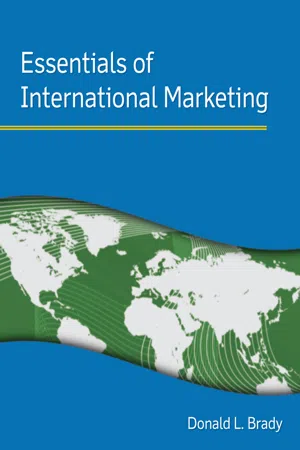![]()
The largest company in the Republic of Kazakhstan is KATEJIKO, ZAO (Katelco). Katelco was formed in 1995, when Kazakhstan’s National Satellite System of TV/Radio Broadcast and Data Transmission (NSST & DT) was introduced as an alternative method to transmit state television programs. In 2002, the division Katelco Plus was created to provide commercial multichannel direct-to-home reception (DTH) satellite service. After the dissolution of the former Soviet Union, management’s philosophy and approach to controlling the company were slow to change. Managers, who had grown up with communist ways, were reluctant to adapt new management styles.
Lack of marketing emphasis, hierarchical structure, and communist methods of control adversely impacted the company’s image and contributed to increased customer dissatisfaction. Also, management had no clear vision of what the company’s market position should be, how marketing activities should be directed, and as a result, no well-defined marketing strategy. In fact, until the late 1990s no marketing efforts existed. Another problem was that employees did not know their responsibilities and were treated as units of production. As a result, middle-level managers were not concerned about motivating employees and trying to achieve the company’s objectives.
Because of the influence of the old communist way of doing business, managers were not motivated to improve the company. These managers were primarily concerned with keeping their own positions and therefore prevented subordinates from demonstrating their full capabilities by restricting their contact with top management. In the area of marketing, a simple sale of a standard set of equipment required the customer to obtain three signatures. Only one person was designated the authority to sign in each of the three areas where signatures were required. Thus, customers had to locate the authorized signers, and, if any were unavailable, they had to return at a later time. Top management was aware of the problems and was initiating efforts to make improvements. To do so, however, a new corporate philosophy had to be instilled and an effective marketing strategy developed.
To expand business in 2002, the management of Katelco Plus began offering multichannel direct-to-home (DTH) satellite service with equipment purchased from Motorola, Inc. in 2001. The management of Motorola, with headquarters in Schaumburg, Illinois, was prepared to work with the management of Katelco Plus to satisfy the firm’s equipment needs. However, because of the potential impact of the lack of marketing in the past, Motorola’s management could possibly have had trouble assessing the future growth rate for equipment. The opportunity for future business could not be assumed with any certainty, which may have increased the business risk for Motorola’s management. However, in 2004, Motorola was selected again to supply digital video encoders and satellite set-top equipment and service to increase the number of available channels that could be offered to forty-eight.
Source: Based in part on information from Katelco’s Web site, http://www.katelco.kz; “Katelco Selects Motorola Technology to Expand Digital Services in Kazakhstan,” Space Newsfeed, April 29, 2004, http://www.spacenewsfeed.co.uk/2004/2_5_2004/2May2004_7.html.
CHAPTER OBJECTIVES
After reading this chapter, you should
• be able to appreciate the importance of international marketing as a business endeavor;
• understand what international marketing is all about;
• understand in what ways international marketing and domestic marketing are similar and different;
• know how international marketing relates to international business;
• appreciate why studying international marketing is important;
• understand why international marketing opportunities are growing;
• understand what the international environment is and why that environment affects decision making and risk in the organization; and
• understand the orientations management may take toward international marketing.
INTERNATIONAL MARKETING IN PERSPECTIVE
All a person has to do today is look around to see the impact of international marketing on our lives. You can scarcely avoid seeing the evidence of international marketing, regardless of where you look. “Made in Taiwan” is written on the label inside your shirt or blouse. The bananas you eat boldly display stickers stating that the fruit comes from Honduras or Ecuador. The tires on your vehicle are embossed “Made in Korea,” and your TV is emblazoned with the declaration that it was made in Japan.
Many of the products that we use regularly and consider necessities either were made outside of the United States or contain foreign-made components. Whether we are aware of it or not, international marketing touches almost every aspect of our lives. Hardly a day goes by that we do not embrace some aspect of international marketing. The presence of international marketing is all around us and is growing year by year and day by day—a presence that will influence our lives more and more in the future.
Exhibit 1.1 Minerva Greek Extra Virgin Olive Oil
This bottle of olive oil is from Greece. The words Greek and Product of Greece and the Greek flag are displayed on the label to help make buyers aware of that fact.
THE IMPORTANCE OF INTERNATIONAL MARKETING
Today, international marketing has become an essential part of business activity. Without international marketing, many of the products we enjoy would either be unavailable or the quantity available for purchase would be significantly reduced. For example, people living in colder climates would have no bananas to eat. People living in the United States would have no television sets. All of the television sets purchased in the United States are produced in foreign countries. Not one TV is produced in the United States anymore.
As we can see, without international marketing our world and our lives would be much different. The availability of some products would be curtailed, and the prices of those products would certainly be higher. International marketing enriches our lives and contributes to an improved standard of living.
Because international marketing is so important, career opportunities in the field are increasing. Employment prospects are good and will probably increase in the future. Opportunities exist for qualified people in a variety of positions in this exciting and challenging area of business.
THE CHALLENGES OF INTERNATIONAL MARKETING
As we have just seen, we cannot escape an involvement with international marketing, because the process affects our lives so significantly whether we realize that fact or not. Being involved with so many of the products we buy, international marketing is becoming an increasingly important component of American business life. Every day, the opportunities for involvement in international marketing increase. The international aspects of marketing are exciting, challenging, expanding, and glamorous to a certain extent. At the same time, international marketing unfortunately suffers from a shroud of mystery, misunderstanding, and fear. This occurs because of the tendency for businesspeople and the public, in general, to lack knowledge about the topic or have a negative bias resulting from inaccurate information, a domestic orientation, or both. In fact, a survey of 11,700 managers in twenty-five countries revealed a rising desire for trade protectionism. In the United States, 60 percent of managers wanted their government to buy from domestic firms and 38 percent favored restrictions on the movement of domestic facilities to foreign countries.1
Managers who understand and appreciate the potential impact of international marketing on the future of their firms are the managers who stand to profit from the growing opportunities in foreign markets. Managers who lack this perception and appreciation are spurning tremendous opportunity. Fortunately, however, regardless of the size of the firm being managed, type of products produced, or other considerations confronted, most managers possess the capacity for joining this expanding area of business activity if desired. Comments by the chairman and chief executive officer of Caterpillar, Inc., that illustrate an understanding of the importance of international marketing to the future of the firm are shown in Exhibit 1.2.
Hardly a day goes by without some reference to international marketing in the news media. Such exposure is indicative of the growing prominence and significance of this area of business. Examples of newsworthy international marketing successes occurring recently include Lockheed Martin Corporation’s receiving a contract to sell forty-eight F-35 Lightning II Joint Strike Fighter jets to the country of Norway, a purchase that will bring the company US$2.5 billion.2 Another example is that the Boeing Company was selected by the governme...

